The ground temperatures rose as high as 7,232 degrees fahrenheit. Flesh was dripping from peoples bodies like rain from a tin roof. Instantly 70,000 Japanese citizens were vaporized. For nearly two square miles buildings collapsed and burned. The clocks that remained forever read 8:15 a.m. It was August 6, 1945. The United States had just dropped the Atomic Bomb on Hiroshima, Japan.
A few weeks ago Shane and I stood on the battleship in Pearl Harbor, Hawaii
. We read the thousands of names of U.S. military that died in a surprise attack from The Empire of Japan. It was a sobering experience --- looking down at the ship below that still contained the bodies of these young soldiers.
We saw films and read plaques telling of the devastation the Japanese caused to the Americans on that day. America had not entered WWII and this was an unprovoked attack, the information said. You can read that entry here:
http://blog.travelpod.com/travel-blog-entries/usatexan/1/1378629076/tpod.html
I was heading for Japan in a few weeks and was eager to find out how the Japanese portrayed the war, both the attack on Pearl Harbor and the dropping of the atom bomb on Hiroshima 4 years later.
I took an early ride on the Japanese 'Bullet Train' today, enjoying it's smooth ride, wide seats and roomy leg space. There are tables to fold down in front and electrical outlets for your electronics
. Free wi-fi is available. It's a pleasant ride to Hiroshima from Kyoto and passes quickly.
After a couple of hours on the bullet train, I arrived in Hiroshima and found a local bus to take me to the "Peace Memorial Park". I am excited to see a part of history I have always heard about.
If I could only see one thing in Japan, I wanted it to be Hiroshima. Now . . . here I stand. The scene here is as surreal as it was at Pearl Harbor. It's a very dramatic experience.
The first atomic bomb to be used in war was dropped here by the U.S. Air Force from the Enola Gay, a B-29 bomber. Within 43 seconds from being dropped, the bomb detonated over the city.
At the epicenter of the blast, the intense heat from the fireball ignited fires throughout the city. The super-high pressure at the epicenter generated a shockwave followed by a powerful blast of wind that instantly crushed buildings nearly 2 miles away
.
Why did the U.S. develop the atomic bomb?
In 1939, at the beginning of WWII, the U.S. started studying the atomic bomb. A program to develop the bomb, called the Manhattan project, was started in 1942. The bomb was successfully tested on July 16, 1945.
Why did the U.S. drop the bomb?
The Japanese had been in a military campaign to conquer different nations of the world for their natural resources for several years. The United States had stayed out of the war.
The U.S. entered WWII after the Japanese attacked Pearl Harbor in 1941. Four long years after the U.S. entered the war, the Japanese military was still refusing to surrender their fight.
The U.S. forces occupied Okinawa and Iwo Jima. They were fire bombing the Japanese cities, but the Japanese had an army 2 million strong stationed in their home islands guarding against invasion
.
To discuss the peace treaty issues once the war ended, Winston Churchill, Harry Truman, and Josef Stalin met together. They discussed the world order once the war would end.
The ways to bring the war to an end included to invade Japan in November of 1945, ask the Soviets to join the war against Japan or to use the atomic bomb.
Truman knew he had the power to end the war when the bomb was successfully tested in 1945. But, it would mean unleashing the worst weapon known to man.
First, the allies made a demand for an immediate and unconditional surrender to the leaders of Japan. No mention was made of the weapons to be used, but the demand stated a refusal would result in total destruction to Japan. Japan's leaders refused the request.
President Truman decided the best way to end the war was to use the bomb. This would restrict the Russian influence on Japan after the war and the cost of development would be more justified
.
The first bomb was dropped on Hiroshima on August 6 and the second bomb was dropped on Nagasaki on August 14, 1945, after which Japan unconditionally surrendered.
While at Pearl Harbor a few weeks ago, I stood on the "surrender deck" of the USS Missouri battleship where the allies accepted the unconditional surrender from Japan.
Hiroshima's Peace Memorial Park
The park covers 120,000 square meters. Before the atomic bomb was dropped this was the political and commercial center of the city. Hiroshima was chosen as the first target city because it had an important port on southern Honshu. Also it was the base of the Japanese Second Army.
Exactly 4 years to the day after the nuclear bomb was dropped, it was decided the area would not be redeveloped but instead devoted to peace memorial facilities.
The park is a UNESCO World Heritage Site
. China had reservations about confirming the memorial as a World Heritage Site. They feared the possibility that the monument might be used to downplay the fact that the victim countries of Japan's aggression suffered the greatest loss of life during WWII. The United States feared the memorial site would altar the historical facts of the war.
While visiting the park today, it is hard for me to imagine it once as a busy, noisy, commercial and residential area in the middle of the city of Hiroshima. Everything was incinerated when the bomb was dropped, except for the Atom Bomb Dome.
It is a beauty of a park, surrounded by greenery and bordered by two rivers. It is right in the center of this city of over a million people, yet it is so quiet and tranquil here. There are over 300 cherry trees along the river bank. It draws hordes of people in the spring to see the blossoms.
From the river you can take a cruise and view the park and A-Dome from the water if you choose
.
One thing that gets my attention is how quiet the park is. There are hundreds, if not thousands of visitors here today of all ages, yet there is a peace and quiet all over the park.
In my mind I try to contrast this area before the bombing and during the bombing with the tranquil setting of the park today. It makes a person realize just how wonderful peace is.
The Park Monuments
The first thing I see when I enter the park is the A-Bomb Dome, also known as the Hiroshima Peace Memorial. It is what remains of the former Prefectural Industrial Promotion Hall. The building served as a location to promote Hiroshima's industries. When the bomb exploded, it was one of the few buildings to remain standing, because the bomb missed it's target, the Aioi Bridge, by 800 feet.
Instead, the bomb exploded almost directly over the dome, allowing the dome to retain it's shape
. It was similar to a building being in the eye of a hurricane. It escapes the destruction while everything around it gets demolished. The buildingss vertical columns were able to withstand the almost vertical downward force of the blast. Parts of the concrete and brick outer walls remained intact. Everyone inside was killed instantly.
In December 1996 the A-Bomb Dome was registered on the UNESCO World Heritage List. Its inclusion into the UNESCO list was based on its survival from a destructive force (atomic bomb), the first use of nuclear weapons on a human population, and more importantly its representation as a symbol of peace.
The Cenotaph for the A-Bomb Victims
After seeing the A-Bomb Dome, I went to the Cenotaph for the A-Bomb Victims. It is located halfway between the Dome and the Museum. It's an arched tomb that was built on August 6, 1952. It was built to help reconstruct Hiroshima-the first city in the world to be destroyed by the first atomic bomb. The city was to be rebuilt as a city of peace
.
The Cenotaph resembles an ancient arch-shaped house. The design was to shelter the souls of the victims from the elements. An inscription reads, "Let all the souls here rest in peace, for we shall not repeat the evil".
It is for those that died in the initial blast and the 100,000 that died later from the exposure to the radiation.
Below the arch is a stone chest that contains a list of the names of the victims, regardless of nationality. Persons related to a death as a result of the bombing can make application and their name is added. As of August 6, 2001 there were 221,893 names listed.
Each year on the anniversay of the bomb, a ceremony is held in the park. Wreaths' are laid and speeches are made. A moment of silence is observed at 8:15 a.m., the precise moment the bomb detonated.
People from all over the world attend the ceremony
. They pray in front of the Cenotaph and the Statue of the A-Bomb Children from the early morning until evening. In the evening, small lanterns are lit and floated down the river along the park. The fire for the lanterns is called the "Embers of the Atomic Bomb".
Messages to console the souls of the dead and a wish for peace are written on the lanterns. Hundreds of them float down the river. Many foreigners participate in this annual event, not just the Japanese.
Today there are people bringing flowers to the memorial. Many groups of school children are on tour of the Park today as well as Japanese groups with Japanese guides. I cannot understand what the guides are telling their groups. It would be interesting to hear the Japanese version of this part of history.
The Peace Memorial Museum
After the Cenotaph, I walked to the Peace Memorial Museum
. . . . . . . . .to be continued.
Burning Flesh -Part I (Japan)
Monday, September 30, 2013
 Hiroshima, Chugoku, Japan
Hiroshima, Chugoku, Japan
Other Entries
-
90Get Onboard!
Sep 0327 days prior San Diego, United Statesphoto_camera6videocam 0comment 4
San Diego, United Statesphoto_camera6videocam 0comment 4 -
91As Beautiful As It Is Dangerous
Sep 0525 days prior Kihei, United Statesphoto_camera114videocam 2comment 2
Kihei, United Statesphoto_camera114videocam 2comment 2 -
92A Walk In The Clouds
Sep 0624 days prior Haleakala National Park, United Statesphoto_camera137videocam 2comment 3
Haleakala National Park, United Statesphoto_camera137videocam 2comment 3 -
93The Playground Called Waikiki
Sep 1020 days prior Waikiki, United Statesphoto_camera60videocam 3comment 0
Waikiki, United Statesphoto_camera60videocam 3comment 0 -
94Today I Found A Diamond
Sep 1119 days prior Waikiki, United Statesphoto_camera89videocam 1comment 0
Waikiki, United Statesphoto_camera89videocam 1comment 0 -
95"Don't Worry About It"
Sep 1218 days prior Honolulu, United Statesphoto_camera135videocam 0comment 0
Honolulu, United Statesphoto_camera135videocam 0comment 0 -
96It's Friday the 13th - Does That Matter?
Sep 1317 days prior Honolulu, United Statesphoto_camera55videocam 3comment 0
Honolulu, United Statesphoto_camera55videocam 3comment 0 -
97..........And The Skipper Too
Sep 1416 days prior Waikiki, United Statesphoto_camera73videocam 10comment 0
Waikiki, United Statesphoto_camera73videocam 10comment 0 -
98As The Sun Sets
Sep 1713 days prior Maui, United Statesphoto_camera101videocam 4comment 0
Maui, United Statesphoto_camera101videocam 4comment 0 -
99THE BED!
Sep 1911 days prior Tokyo, Japanphoto_camera10videocam 0comment 2
Tokyo, Japanphoto_camera10videocam 0comment 2 -
100First Day in Tokyo
Sep 1911 days prior Tokyo, Japanphoto_camera33videocam 1comment 3
Tokyo, Japanphoto_camera33videocam 1comment 3 -
101Iranians Like America
Sep 2010 days prior Tokyo, Japanphoto_camera68videocam 2comment 2
Tokyo, Japanphoto_camera68videocam 2comment 2 -
102A Young Woman Passes Me A Note
Sep 219 days prior Nikko, Japanphoto_camera121videocam 0comment 2
Nikko, Japanphoto_camera121videocam 0comment 2 -
103I'm Being Followed . . . and I Feel Uncomfortable
Sep 228 days prior Nikko, Japanphoto_camera54videocam 2comment 3
Nikko, Japanphoto_camera54videocam 2comment 3 -
104Faster Than A Speeding Bullet (Japan)
Sep 273 days prior Kyoto, Japanphoto_camera34videocam 2comment 2
Kyoto, Japanphoto_camera34videocam 2comment 2 -
105The White Deer
Sep 282 days prior Nara, Japanphoto_camera67videocam 0comment 0
Nara, Japanphoto_camera67videocam 0comment 0 -
106The Thousands of Gates (Japan)
Sep 291 day prior Kyoto, Japanphoto_camera101videocam 1comment 0
Kyoto, Japanphoto_camera101videocam 1comment 0 -
107Burning Flesh -Part I (Japan)
Sep 30 Hiroshima, Japanphoto_camera43videocam 1comment 0
Hiroshima, Japanphoto_camera43videocam 1comment 0 -
108Burning Flesh - Part 2 (Japan)
Oct 011 day later Hiroshima, Japanphoto_camera40videocam 0comment 0
Hiroshima, Japanphoto_camera40videocam 0comment 0 -
109Bathing With Naked Men (Japan)
Oct 022 days later Miyajima, Japanphoto_camera52videocam 0comment 2
Miyajima, Japanphoto_camera52videocam 0comment 2 -
110Don't Look Him In The Eyes (Japan)
Oct 033 days later Arashiyama, Japanphoto_camera166videocam 5comment 0
Arashiyama, Japanphoto_camera166videocam 5comment 0 -
111The Land of the Rising Sun (Japan)
Oct 044 days later Shanghai, Chinaphoto_camera50videocam 1comment 0
Shanghai, Chinaphoto_camera50videocam 1comment 0 -
112Feeding the Dead (Cambodia)
Oct 055 days later Siem Reap, Cambodiaphoto_camera35videocam 3comment 0
Siem Reap, Cambodiaphoto_camera35videocam 3comment 0 -
113My Chair is Under Water (Cambodia)
Oct 1010 days later Battambang Province, Cambodiaphoto_camera117videocam 3comment 0
Battambang Province, Cambodiaphoto_camera117videocam 3comment 0 -
114It's Not The Big Top (Cambodia)
Oct 2424 days later Battambang Province, Cambodiaphoto_camera50videocam 4comment 0
Battambang Province, Cambodiaphoto_camera50videocam 4comment 0 -
115Who Stole My Sandals? (Cambodia)
Oct 2626 days later Battambang Province, Cambodiaphoto_camera88videocam 1comment 0
Battambang Province, Cambodiaphoto_camera88videocam 1comment 0 -
116Fire In The Sky (Thailand)
Nov 1647 days later Pattaya, Thailandphoto_camera60videocam 5comment 2
Pattaya, Thailandphoto_camera60videocam 5comment 2 -
117Happy Holidays (Vietnam)
Nov 2556 days later Hanoi, Vietnamphoto_camera1videocam 0comment 0
Hanoi, Vietnamphoto_camera1videocam 0comment 0 -
118The Hands from Hell (Thailand)
Nov 2657 days later Chiang Rai Province, Thailandphoto_camera91videocam 3comment 0
Chiang Rai Province, Thailandphoto_camera91videocam 3comment 0 -
119Black House Chiang Rai (Thailand)
Nov 2758 days later Chiang Rai, Thailandphoto_camera199videocam 1comment 0
Chiang Rai, Thailandphoto_camera199videocam 1comment 0 -
120The Clock (Thailand)
Nov 2859 days later Chiang Rai Province, Thailandphoto_camera58videocam 1comment 0
Chiang Rai Province, Thailandphoto_camera58videocam 1comment 0 -
121The Epic Journey (Laos)
Nov 2960 days later Chiang Khong, Thailandphoto_camera70videocam 2comment 0
Chiang Khong, Thailandphoto_camera70videocam 2comment 0 -
122Shipwreck on the Mekong (Laos)
Nov 3061 days later Huay Xai, Laosphoto_camera70videocam 4comment 2
Huay Xai, Laosphoto_camera70videocam 4comment 2 -
123Please Cover Your Body - (Laos)
Dec 0162 days later Luang Prabang, Laosphoto_camera141videocam 0comment 0
Luang Prabang, Laosphoto_camera141videocam 0comment 0 -
124Discovering Luang Prabang (Laos)
Dec 0263 days later Luang Prabang, Laosphoto_camera136videocam 0comment 0
Luang Prabang, Laosphoto_camera136videocam 0comment 0 -
125Waterfall on the Mekong (Laos)
Dec 0364 days later Luang Prabang, Laosphoto_camera57videocam 0comment 2
Luang Prabang, Laosphoto_camera57videocam 0comment 2

 Hiroshima, Chugoku, Japan
Hiroshima, Chugoku, Japan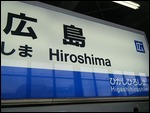
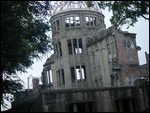
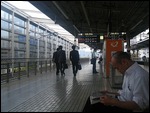
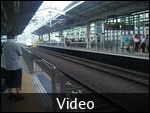
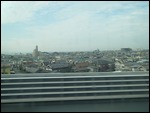
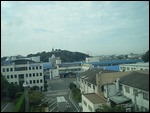
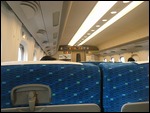
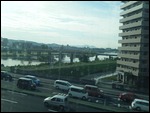
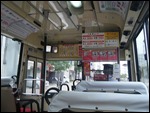
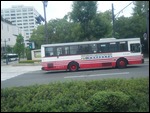
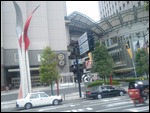








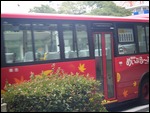

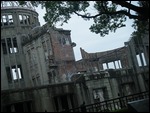
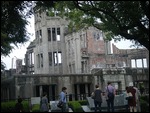
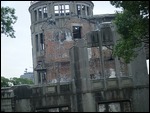
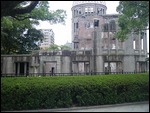
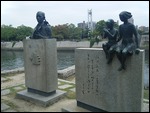
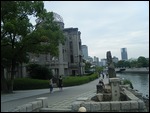


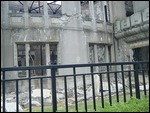
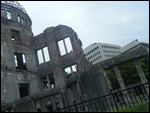
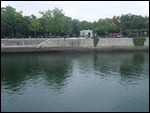
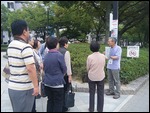
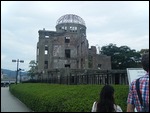
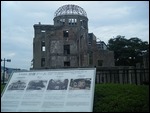
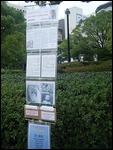
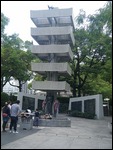
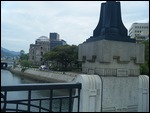
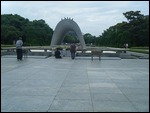
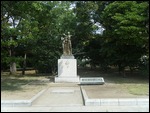
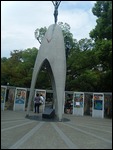
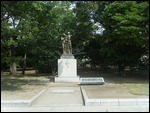
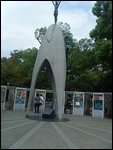
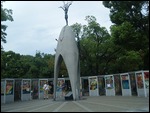
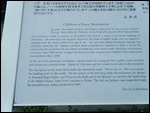
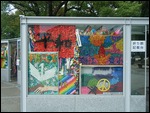
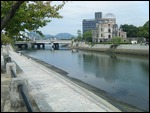
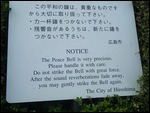
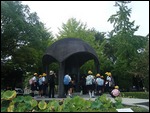
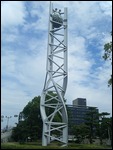
2025-05-22